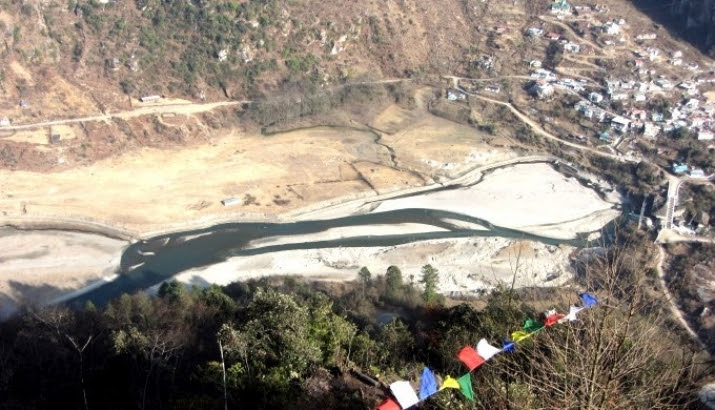Lobsang Gyatso was born in Tibet in the area of Kham in 1928. He became monk at the age of 11 and studied at Drepungmonastery. During the 1959 Tibetan uprising he fled Tibet as part of the Tibetan Exile Community in India.
He founded in 1973 the Institute of Buddhist Dialectics in Dharamsala and in 1991 the College for Higher Tibetan Studies in Sarah, two non-profit educational institutions.
He is the author of several books in Tibetan that were translated in several languages.
Lama Lobsang Gyatso, a Tibetan Buddhist monk who has been a vocal opponent of hydropower projects in Tawang District of the northeastern Indian state of Arunachal Pradesh, has received the Sanctuary Wildlife Service Award from Sanctuary Asia magazine in recognition of his untiring campaign to save the region’s population of black-necked cranes.
Gyatso received the award at a ceremony in Mumbai on 2 December. It was presented by Usha Thorat, deputy governor of the Reserve Bank of India, in the presence of several dignitaries, including the chief minister of Maharashtra, Devendra Fadnavis, and Sanctuary Asia editor Bittu Sahgal.
The rare black-necked crane is rated as vulnerable on the International Union for Conservation of Nature’s IUCN Red List of endangered species. According to legend, black-necked cranes, which are revered in Tibetan Buddhism and considered a symbol of peace, carried incarnations of the Dalai Lama from monastery to monastery on their backs. However, the state government’s decision to build the 780 MW Nyamjang Chhu hydropower project in Tawang, near the crane’s winter habitat upset the local community, who formed the Save Mon Region Federation (SMRF), led by Lama Lobsang Gyatso, to protect the birds and the area’s ecology.
 A black-necked crane. From planetstillalive.com.
A black-necked crane. From planetstillalive.com.Sanctuary Asia noted that Gyatso had fought to protect the region’s river and culture through local rallies and campaigns, meeting parliamentarians in New Delhi, reporting environmental and forest violations to the Ministry of Environment, Forest and Climate Change, media advocacy, community mobilization, legal action, and by documenting culturally and ecologically sensitive sites affected by destructive hydroelectric projects.
While campaigning against the construction of the hydropower project in April, Gyatso was arrested by police for disturbing the peace. In May, two people were reportedly shot dead by police and seven more injured during a protest by members of the SMRF over the arrest of Gyatso.
In his acceptance speech, Gyatso dedicated the award to the memory of his two colleagues who were killed by police.
 The site of the proposed hydropower project on the river Naymjang Chhu, the winter habitat of the black-necked crane. Photo by Nivedita Khandekar. From indiaclimatedialogue.net
The site of the proposed hydropower project on the river Naymjang Chhu, the winter habitat of the black-necked crane. Photo by Nivedita Khandekar. From indiaclimatedialogue.netWhile speaking at the India Climate Dialogue in May this year, Gyatso observed that 13 hydropower projects had been proposed for Tawang. Noting that the SMRF was not opposed to all of the projects, Gyatso emphasized that most of the district’s 31 existing mini- and micro-hydropower plants were either dysfunctional or operating below capacity and suggested that the state government should first ensure that these projects were running smoothly: “Then, of the 13 planned, we can go for at least one . . . and see the impact. Given the fragile seismic zone, there needs to be checks and balances.” (India Climate Dialogue)












